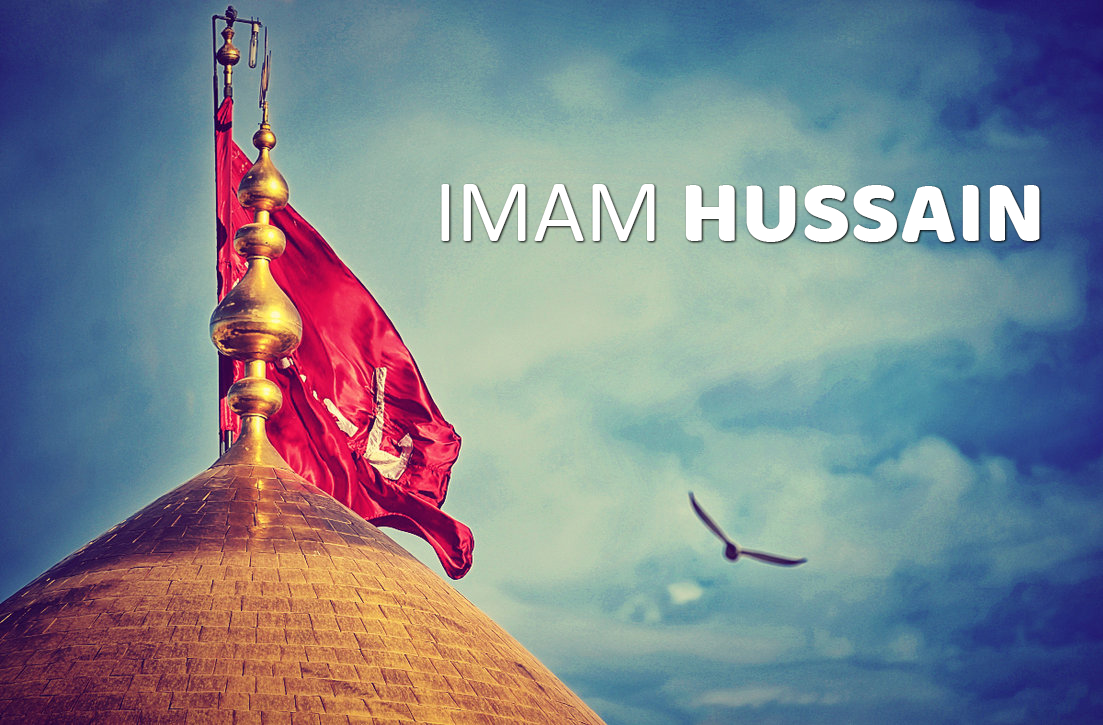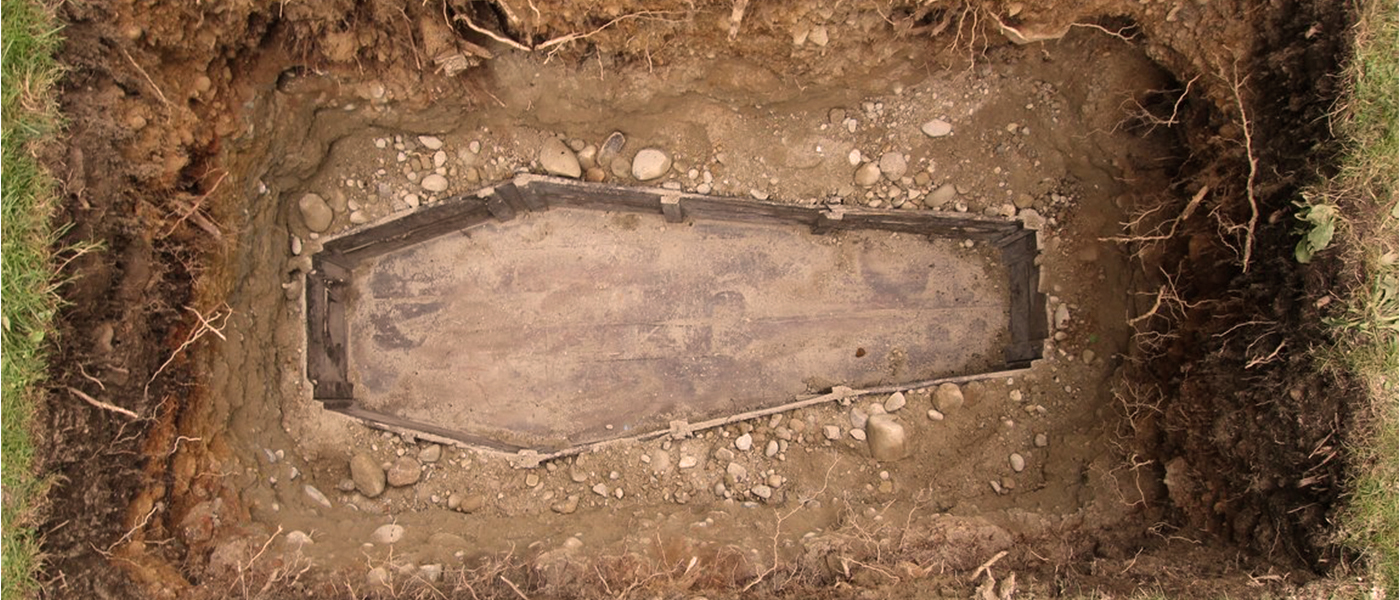

Why we love Imam Hussain (AS) like the Prophet (PBUH&HP)
Life is a journey full of twists and turns. Without a guide in this deceptive path, one can become lost, forfeiting something that cannot be regained - the precious gift of redemption. That is why Islam emphasizes the need for Muslims to never be without a leader. Prophet Mohammad (PBUH&HP) is the best example of a Muslim within Islam.
There has certainly been for you in the Messenger of Allah an excellent pattern for anyone whose hope is in Allah and the Last Day and [who] remembers Allah often. (The Holy Quran 33:21)
O you who have faith! Obey Allah and His Apostle, and do not turn away from him while you hear [him]. (The Holy Quran 8:20)
These Quranic verses firmly establish that no one surpasses Prophet (PBUH&HP) as the ideal role model, guiding us to emulate his actions and lifestyle for our salvation. When we follow someone as a model in our life, we inherently respect his beliefs and ideas.
From this, we deduce that if our model is devoted to Islam, religion, and the path of Allah's pleasure, we will also try to align ourselves with that path and potentially attain spiritual ascension. Our model here is not an ordinary person but our dear Prophet. Therefore, there is no disputing the goodwill of this revered figure. An important thing that we must learn from the Prophet (PBUH&HP) as the supreme model for Muslims is to know whom to love and whom to dislike.
The question is: how does understanding Prophet’s feelings towards individuals would help us?
The answer lies in this: “By following the Prophet as an example, we can accurately discern these people, subsequently progressing toward Allah’s satisfaction and eternal happiness.”
Two figures whom the Prophet constantly favored were Imam Hassan and Imam Hussein (as). Imam Hussein (AS) was born on the third of Sha'ban in the fourth year of AH.
Since the great Prophet passing in the tenth year of AH, Imam Hassan and Imam Hussein (AS) spent their childhood with their dear grandfather.
Before delving further, let us know more about our third Imam. Imam Hussein (as) is also called Aba-Abdillah and Sayyid al-Shuhada among the Shias. He is the third Imam for the Shias, martyred in the course of Ashura. He is the second child of Imam Ali (AS) and Fatemeh Zahra (AS), and the grandson of Prophet Mohammad (PBUH&HP). Following his brother Imam Hassan’s (AS) leadership, he took charge of leading the Shias for ten years. Both Shia and Sunni historical records confirm that the Prophet of Islam (PBUH&HP) announced his martyrdom at his birth and chose the name "Hussein" for him. (1)
The Prophet held deep affection for Imam Hassan and Imam Hussein and recommended everyone to love them. Imam Hussein (AS) is one of the of Prophet’s Ahl al-Bayt and also one of the recipients of the verse of purification*.
Numerous narrations from Prophet Mohammad (PBUH&HP) extol Imam Hussain’s virtue. A famous narration quotes the Prophet (PBUH&HP) on Imam Hussain (AS): “Hussain is from me and I am from Hussain. Allah loves who loves Hussain.” (2)
Through this narration, the Holy Prophet (PBUH&HP) show other Muslims the sacred position of Imam Hussein (PBUH) and imparts the exceptional stature of this lineage. In an era where falsehood and hypocrisy infiltrate the Muslim community, this saying compels believers to rid themselves of hypocrisy and misguidance.
Regrettably, despite its resonance, this profound message did not deter the brutal martyrdom of Sayyid al-Shuhada (PBUH), which transpired in the Karbala before thousands of seemingly Muslim individuals.
The Prophet’s (PBUH&HP) adoration for Imam Hussein (AS) served a dual purpose: it conveyed not only his love for his grandson, but also aimed to engender affection towards Imam Hussein as the Imam of the Ummah, rallying people to follow him. Therefore, the Holy Prophet of Islam consistently introduced the Imam Ali, Fatima Zahra, Imam Hassan and Imam Hussein (AS) as his family and Ahl al-Bayt. He equated them with the Quran on numerous occasions, underscoring the necessity for Muslims to accept their leadership and guidance for spiritual elevation. The Prophet also said this in the hadith of the thaqalayn:
"Indeed, I am leaving two things among you, to which if you hold yourself, you will never astray: the book of Allah –who is almighty and great- and my Ahl al-Bayt (household), my 'itra (family). O people hear! And I have announced to you that indeed you will enter my presence and I will ask you about what you did to the thaqalayn (two weighty things) and the thaqalayn are the book of Allah and my Ahl al-Bayt."(3)
Conclusion:
These narrations illuminate Imam Hussein’s (AS) lofty status in the the Prophet’s (PBUH&HP)eyes and the Prophet’s responses to him serves as a guide. Not only are Muslims, as followers of the Holy Prophet, must praise and love Imam Hussein, but we must also adopt his behavior, thoughts, and ethics, and follow his path in our lives. Furthermore, the Prophet's interactions with Imam Hussein underscore that those who harbor hostility or animosity towards him today are not true Muslims. This group should not be regarded as part of the Prophet’s (PBUH&HP) religion.
References:
- Al‑Irshad (2nd Volume - page 130)
- Sunan al-Termizi (6th volume – number 3775)
- Al-Kafi (1st Volume – page 452)
----------------------
*The Verse of Purification is the 33rd verse of Al-Aḥzāb in the Quran (33:33). The verse has special importance for Shia Muslims due to giving information about Ahl al-Bayt of Prophet Muhammad (PBUH&HP). Shias reportedly believe it to designate the "Ahl al-Bayt" being infallible.
Share This Article

What Happens After Death in Islam?
Almost everyone is scared of death; Even those who may commit suicide in a specific mental condition. If a physician tells us that we have an unknown disease and we will only live for a few more months, we would panic and stop living our normal life (we might live better or worse).
The reason that makes most of us scared of death is that we think all the things that we have tried to gain in this life, such as our belongings, our beloveds, our success, and experiences are going to disappear after death. Or that there is still a lot for us in this world to experience, achieve and enjoy.
However, this fear of death is mostly because the other world and the life after death are quite unknown to us, but if we come to understand the afterlife, we may even become eager to fulfill our duties in this life and get ready to travel to the other world.
Now, let’s see if it is true that we will lose everything after death and also what Islam says about death and the life after it.
Afterlife (Ma’ad); One of the Pillars of Islam
Having faith in the afterlife (Ma’ad) is so important that it is one of the pillars of Islam. The main reason is that it is by believing in the fact that we will be resurrected after death and we will be held responsible for all of our actions, that we are careful about our manners and behaviors in this worldly life. It is mainly this idea that shapes our lifestyle and our relations with God, people, environment, etc.
The worldly life
We usually take the earthly life very seriously, as if there is nothing more significant than our goals, actions, and relations in this world. Although the way we live in this world is significant and it is our worldly actions that shape our lives in the hereafter, the Quran emphasizes that the real life is to come: “The life of this world is nothing but diversion and play, but the abode of the Hereafter is indeed Life (itself), had they known!” (29:64)
The Afterlife and the Stages after Death in Islam
1. Grave
“Then He made him die and buried him” (80: 21).
After we are dead and buried in a grave, our grave phase starts. But how is this phase?
It is narrated that “the grave is either a garden from heaven’s gardens or a corner of hell” [1].
The Grave Pressure
When the dead person is buried, he will not feel suffocated, but he will experience a sort of pressure that is indescribable for people in this world as if he is being squeezed to pass a needle hole. This pressure would work as a purifier for believers but unbelievers has nothing but pain and sorrow [2].
This pressure does not belong to those people who are buried, but every dead person will have this experience, even if they are dead hung or burnt into ashes. The pressure belongs to the soul, and every soul will go through the experiences of the afterlife [3].
But does everyone experience the grave pressure? It is narrated from Imam Sadiq (AS) that only very few people will be saved from going through this pressure [4].
Some of the reasons that will increase the grave pressure are backbiting, gossiping, disrespecting parents, usury, immorality, unpleasant manner towards family and friends, devastating the rights of other humans, etc. [5], while behaving based on Islamic teachings and ethics will reduce the grave pressure.
The First Night
in Grave
When the dead person is buried, his/ her soul will leave the body but will still stay close to it. So he/she can see the burial ceremony and what is going on around. When his/ her relatives leave the grave, he/she finds him/herself alone in the dark and small grave.
Here, people are divided into three groups: perfect believers, complete atheists, the middle ones. The first group will start their heavenly life right away, the second group will start their eternal life in hell, and the middle that includes the majority of people will remain in hope and fear until the Resurrection Day when their situation will be determined [6].
Questioning by Nakir and Munkar
The first and the second group will experience the grave questioning by two angels; Nakir and Munkar so that they quickly start their eternal life in heaven or hell. But the third group will not be questioned until the Judgment Day [7].
2. Limbo (Barzakh)
It is narrated from Imam Sadiq (AS) that limbo (Barzakh) means human’s grave from the time he dies until the day he is resurrected [8]. We know that most human bodies will be destroyed after some time in the grave, but what happens to the soul?
Based on the fact that the limbo (Barzakh) is a place between this life and the other life, and that all human beings, even those who are burnt to ashes or those who are hunted and eaten by animals will experience the limbo (Barzakh), we can conclude that the life in the grave -mentioned as limbo (Barzakh) life- is not limited to the grave. So what and how is limbo (Barzakh) life?
Right after death, the human soul directly enters a new life in which he/she can feel everything. They can have pleasure and sorrow which is based on their actions and behaviors in their worldly life.
Therefore, human experiences two lives after death. One is the limbo (Barzakh) life that would end like our earthly life: “And before them is a barrier until the day they will be resurrected” (23:100), and the other is the eternal life that starts on the Day of Resurrection and people may go to eternal hell or eternal heaven based on their worldly actions [9].
3. The Day of Resurrection
“And because the Hour is bound to come, there is no doubt in it, and Allah will resurrect those who are in the graves.” (22: 7)
The Day of Resurrection does not only belong to human beings. All creatures will be resurrected on that day [10]. On the Day of Resurrection, people will be queued to be questioned about their actions and to be sent to their eternal place. This day is not like our worldly days that are 24 hours. But as stated in the Quran “He directs the command from the heaven to the earth; then it ascends toward Him in a day whose span is a thousand years by your reckoning” (32: 5). And in another verse, it is stated that: “The angels and the Spirit ascend to Him in a day whose span is fifty thousand years” (70: 4).
Imam Sadiq (AS) was asked: “why is that in one verse Allah says that the Day of Judgment is equal to a thousand years and in another verse, it is said to be equal to fifty thousand years?” Imam (AS) answered: “On the Day of Resurrection there are fifty stops, each of them equals a thousand years of this world” [11].
It is on this day that people face their worldly actions: “The day when every soul will find present whatever good it has done; and as for the evil, it has done, it will wish there were a far distance between it and itself. Allah warns you to beware of [disobeying] Him, and Allah is most kind to [His] servants” (3: 30).
4. The Eternal Life in the Hereafter
Unlike limbo (Barzakh) in which people wait to be resurrected and transported to a new world, the afterlife, which comes after the Day of Resurrection is eternal. Unlike this world in which we have to work and gain for the next life; in the eternal heaven there is no tiredness, nor sorrow, nor pain, nor hardship; “to remain in them [forever]; they will not seek to leave it for another place” (18: 108).
So, in the afterlife, people may become eternal in heaven or hell [i]. However, not all of those who go to hell will be eternal there, as it is narrated from the Imam Sadiq (AS) that “on the Day of Resurrection, God will expand His mercy so generously that even Iblis (Satan) will be greedy to receive it [12].
Remembering Death in Islam
The role of remembering death in improving the worldly life and therefore the life in the hereafter is very important. Imam Ali (AS) says: “when deciding to do evil actions, remember death as it destroys the pleasures and weakens the desires” [13]. But what is the most important benefit of remembering death?
Making life Meaningful
If we do not believe in another life and remember death as the end of existence, then many things in life may sound vain for us, and we may even lose our motivation to keep on having a good life. But when we believe that there is another life which is the real life, our actions in this world become more meaningful and targeted. Allah says in the Quran: “Did you suppose that We created you aimlessly and that you will not be brought back to Us?” (23: 115)
When we believe that there is no life after death, we might face many anxieties, disappointments and live an aimless life. But keeping in mind that whatever we do is being seen by God and recorded by Him, we will have more motivation to do good things, even if no one in this world cares about us.
“They say, ‘There is nothing but the life of this world: we live, and we die, and nothing but time destroys us.’ But they do not have any knowledge of that, and they only make conjectures… Say, ‘It is Allah who gives you life, then He makes you die. Then He will gather you on the Day of Resurrection, in which there is no doubt. But most people do not know” (45: 24-6).
Notes:
[i] Read about the concept of eternal life here: http://blog.holymoodpictures.com
References:
- Allamah Majlesi, Bihar al-anwar, vol. 6. Chapter Sakarat al-mawt, narration No. 19
- Bahmanpour, Mohammad Saeed, (2012) Naseem- e Abadiyyat, p. 34
- Shaikh Al-Sadouq, Man la yahzuruhu Al-faqih, vol. 1, p. 279
- Allamah Majlesi , Bihar Al-Anwar, vol. 6, p. 260
- Allamah Majlesi , Bihar Al-Anwar, vol. 5, p. 265
- Bahmanpour, Mohammad Saeed, (2012) Naseem- e Abadiyyat, p. 41
- ibid
- Allamah Majlesi Bihar al-anwar, vol. 6. Chapter Ahwal-e barzakh, narration No. 116
- Mutahhari, Murtaza, Life after death, Vol. 3, p. 504
- An’aam (6), Verse No. 38
- Allamah Majlesi Bihar al-anwar, vol. 7, p. 126
- Allamah Majlesi , Bihar Al-Anwar, vol. 7, p. 287
- Nahjul balagha, sermon No. 99
Read More

8 Requirements for Awaiting the Last Savior in Islam
The concept of the last savior and his advent exist in many religions, although with some fundamental differences. Here we review what expecting the last savior in Islam means, what are its requirements and how it improves the quality of one’s life.
1. Hoping for a Widespread Evolvement through the Last Savior in Islam
Awaiting, in general, represents a situation where someone is hoping or watching for something to happen, especially for a long time. Awaiting the last savior means hoping for the last divine messenger who will reveal the truth and spread justice and peace in the whole universe. In Surah Qasas, it is stated that: “We wanted to confer a favor upon those who were oppressed in the land and make them leaders and make them inheritors” (28:5). This is a promising divine concept which enlightens the hearts, prepares human beings for receiving who they are waiting for, and brings hope to them [1].
2. Not Standing the Current Circumstances
We are surely living in an era that is filled with injustice; some people are at war, and many of them face discrimination and hypocrisy. From an Islamic point of view, even the physical presence of the last savior brings mercy over human beings, and all these shortcomings are due to his absence. Hence, a conscious human being, a creature that is a perfectionist in nature, does not tolerate these shortcomings and defects and tries to remove the barriers against the presence of the last savior.
3. Hoping for a Better World
Being a perfectionist and trying to achieve a better condition is an inherent quality of the human beings that regulates almost all activities of every human being towards perfection. Hence, a conscious human being is naturally inclined toward accelerating the coming of the last savior.
4. Making Efforts to Pass the Current Unfavorable Condition and to Reach a Desirable Situation
Hoping for a better future that the presence of the last savior will bring about is not sufficient. One should also make efforts and participate in the process of preparing the requirements of the advent of the savior.
5. Being Aware of the Absence of the Last Savior
Sometimes something is missed in our life, but we are not even aware of that. The very first step in the process of awaiting the last savior is to know that there is divine mercy that is absent.
6. Feeling the Need for the Advent of the Last Savior
One might be aware of the absence of the last savior but does not believe that human beings require his presence and guidance. Hence, waiting for the last savior requires one to contemplate and know what his presence will bring about for human society. In fact, this situation is like a divine test to see whether one will rely on his\her abilities and will to improve the current condition.
7. Believing in and Wishing for the Future Coming of the Last Savior
Those who do not believe in the advent of the last savior will undoubtedly not await for him. Prophet Muhammad (PBUH&HP) and Imams (AS) have always tried to reinforce the belief in the advent of the last savior and to prevent any despair among human beings. In this regard is a narration (hadith) from Prophet Muhammad (PBUH&HP), which describes that The Judgment Day will not arrive until one of his descendants rises with the truth and makes his advent whenever Allah permits [2]. One who believes in the advent of the savior in Islam should also wish that it happens, otherwise, he\she is not really awaiting his advent. This requires having a clear vision of the things that will happen if the last savior emerges. If one is afraid of that time, he\she will surely not await for him to come.
8. Believing that the Advent of the Savior Is Close
Although the items above make one await for the savior, believing that this might happen very soon will cause one to get ready to help the last savior in Islam in his peace plan.
References:
- M. Musavi Isfahani,"Mikyal al Makarim", vol. 2, p. 235.
- Wasa’il ash-Shi’a, vol. 7, p. 325.
Read More

